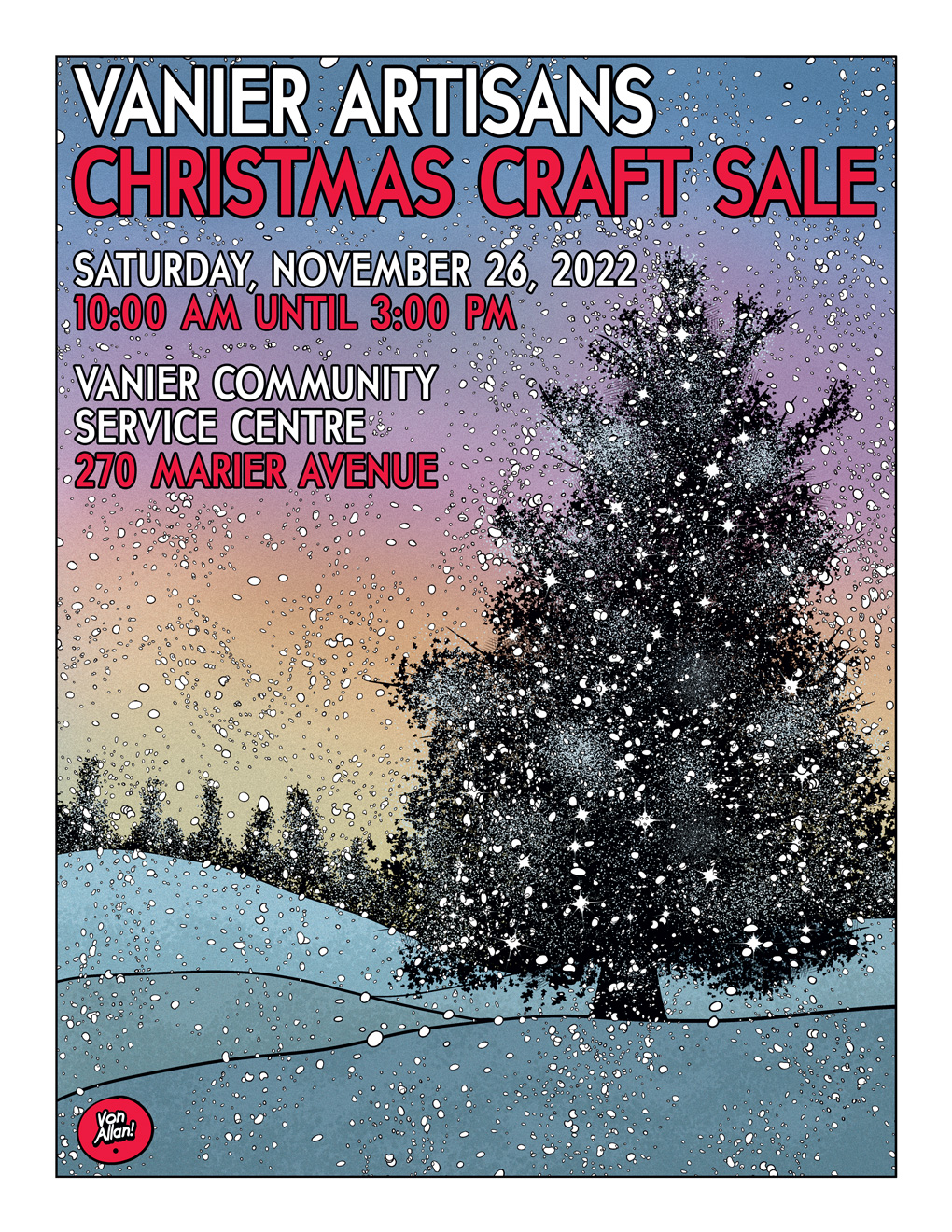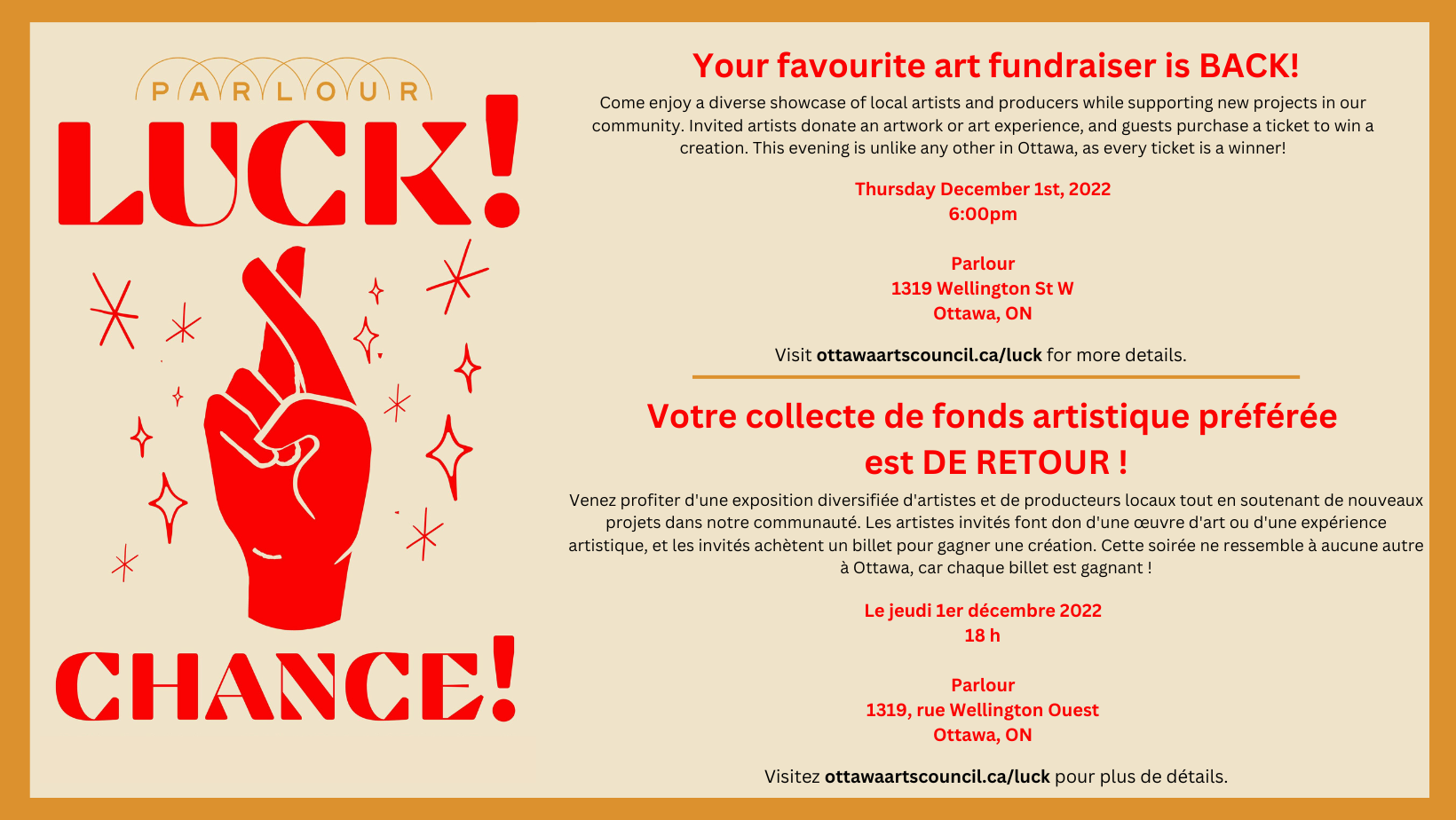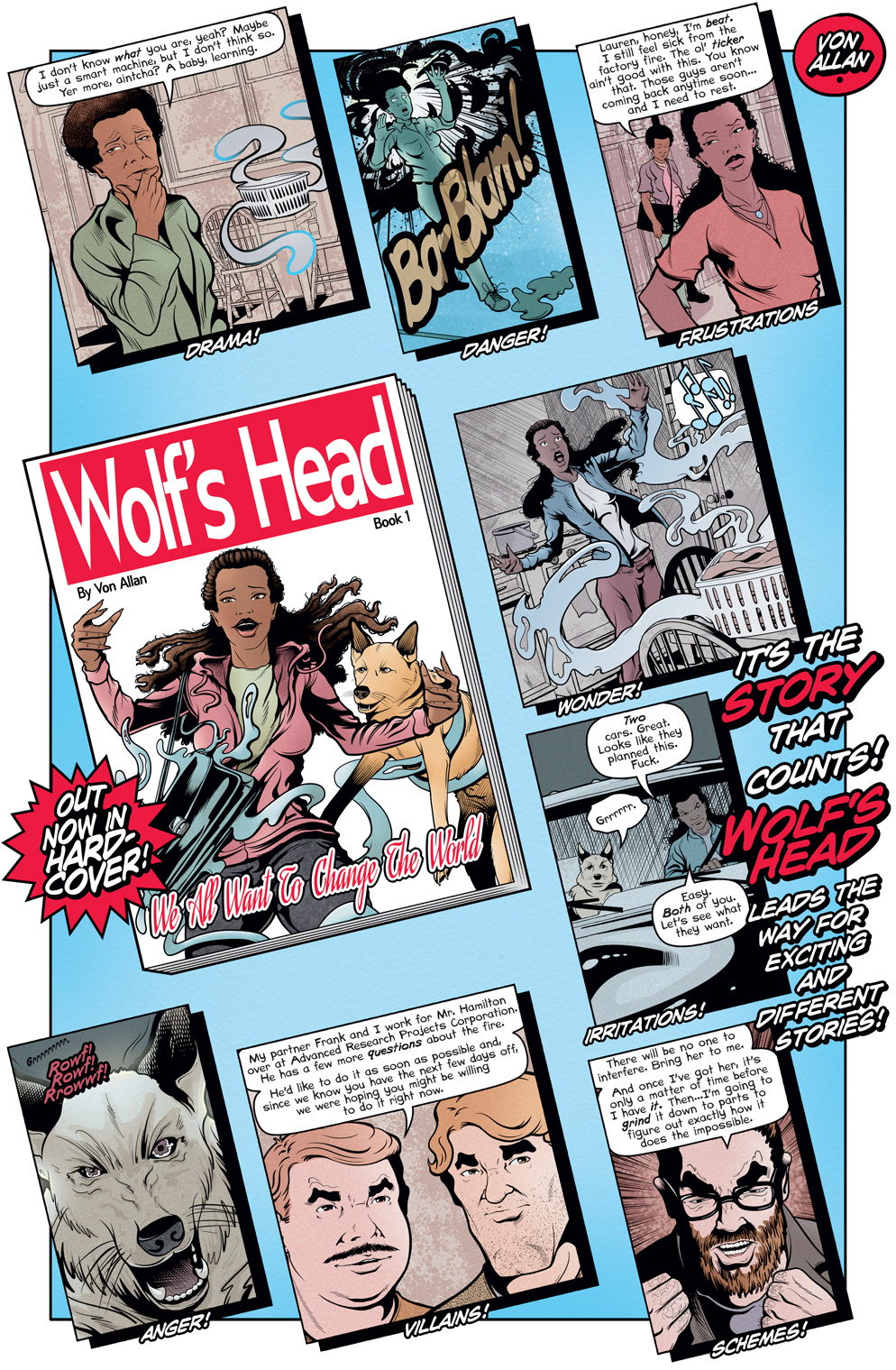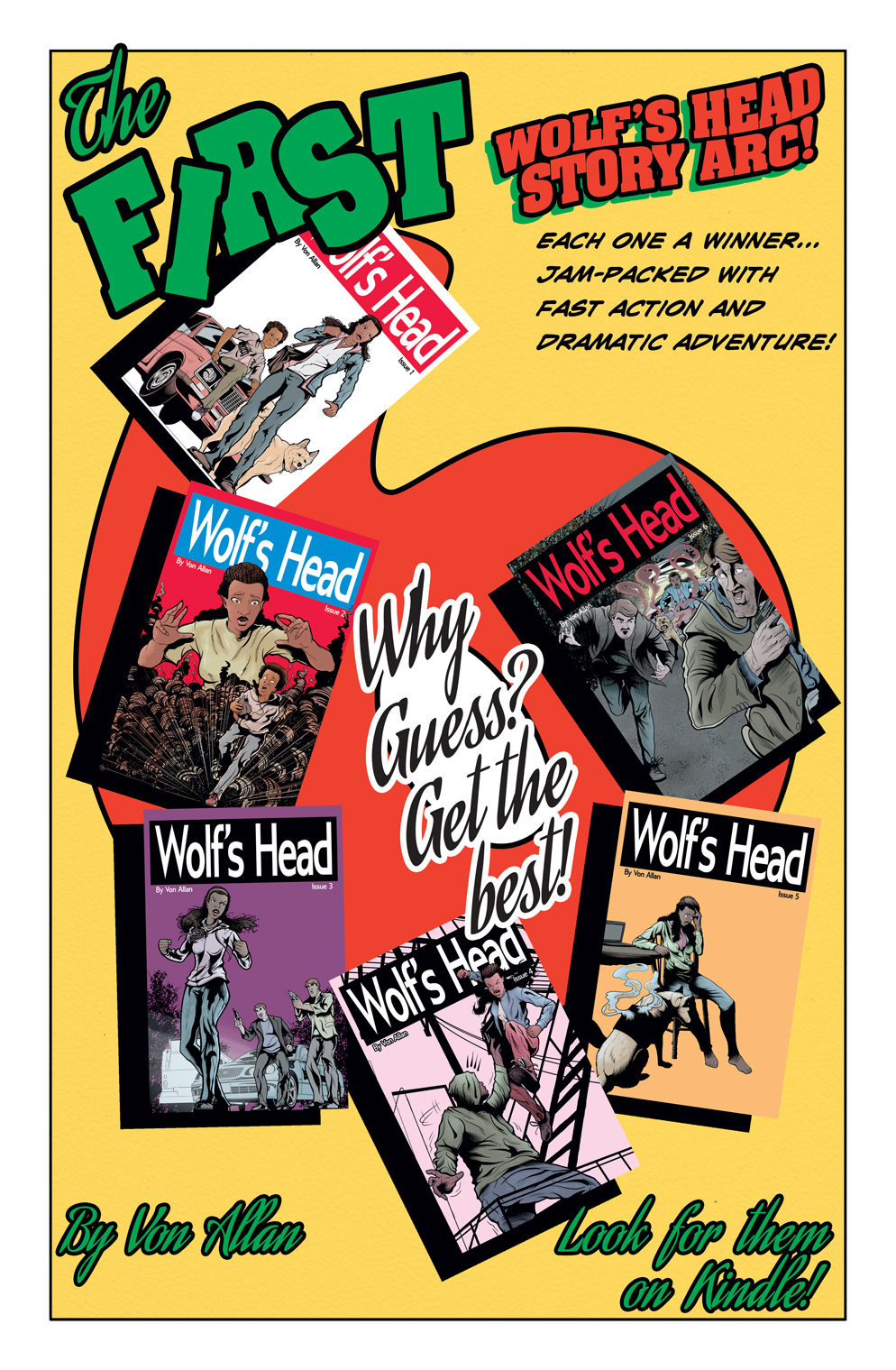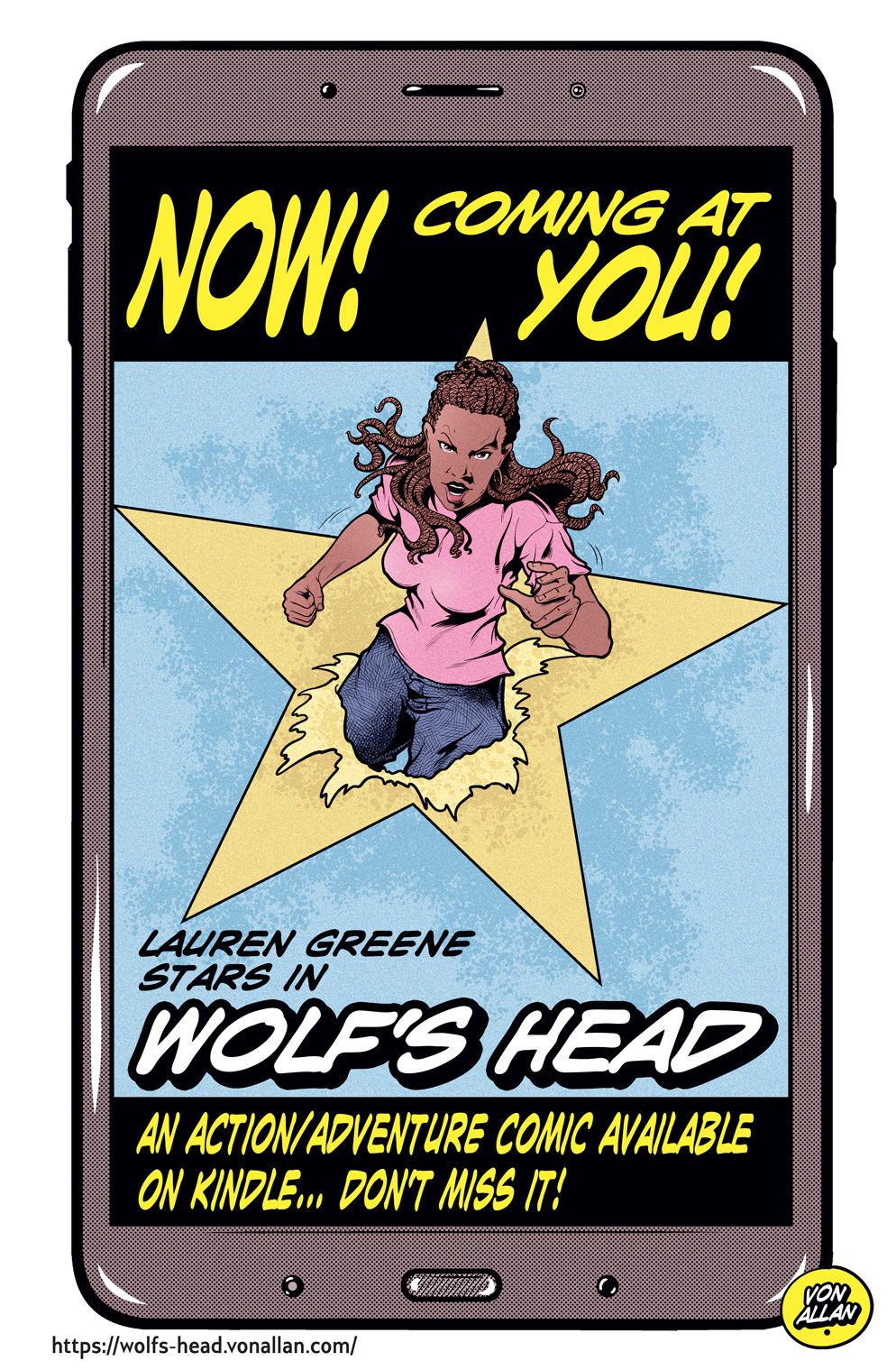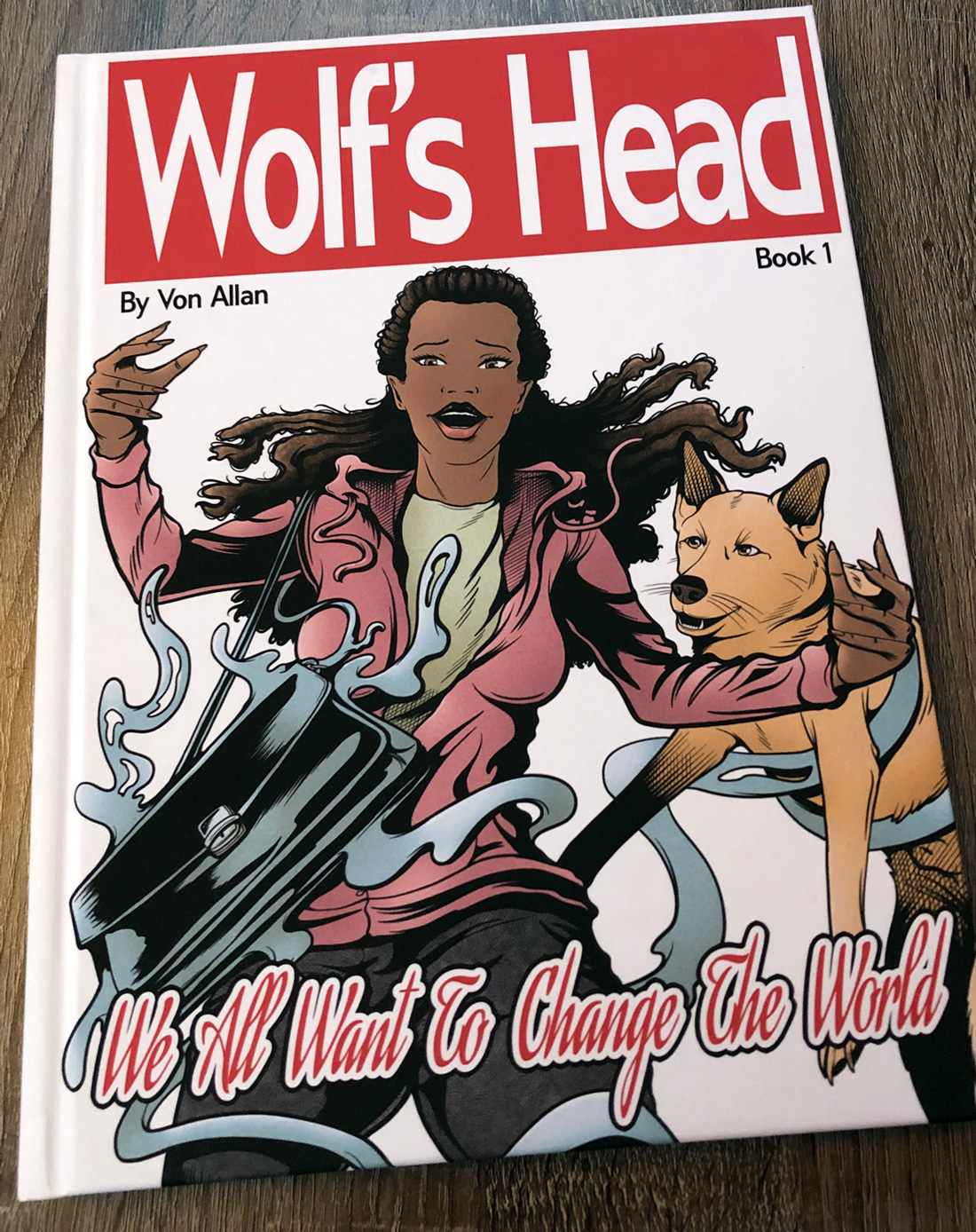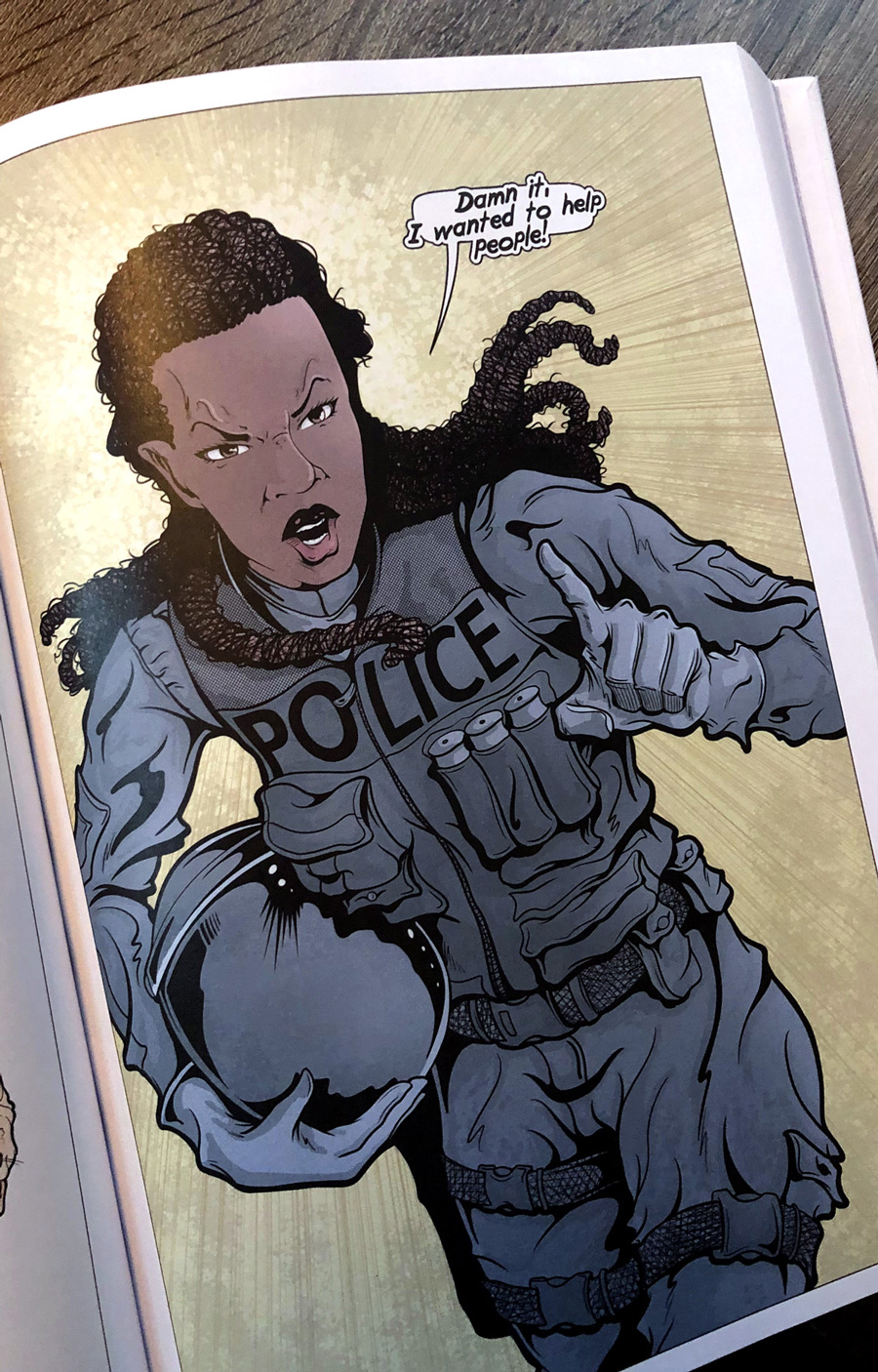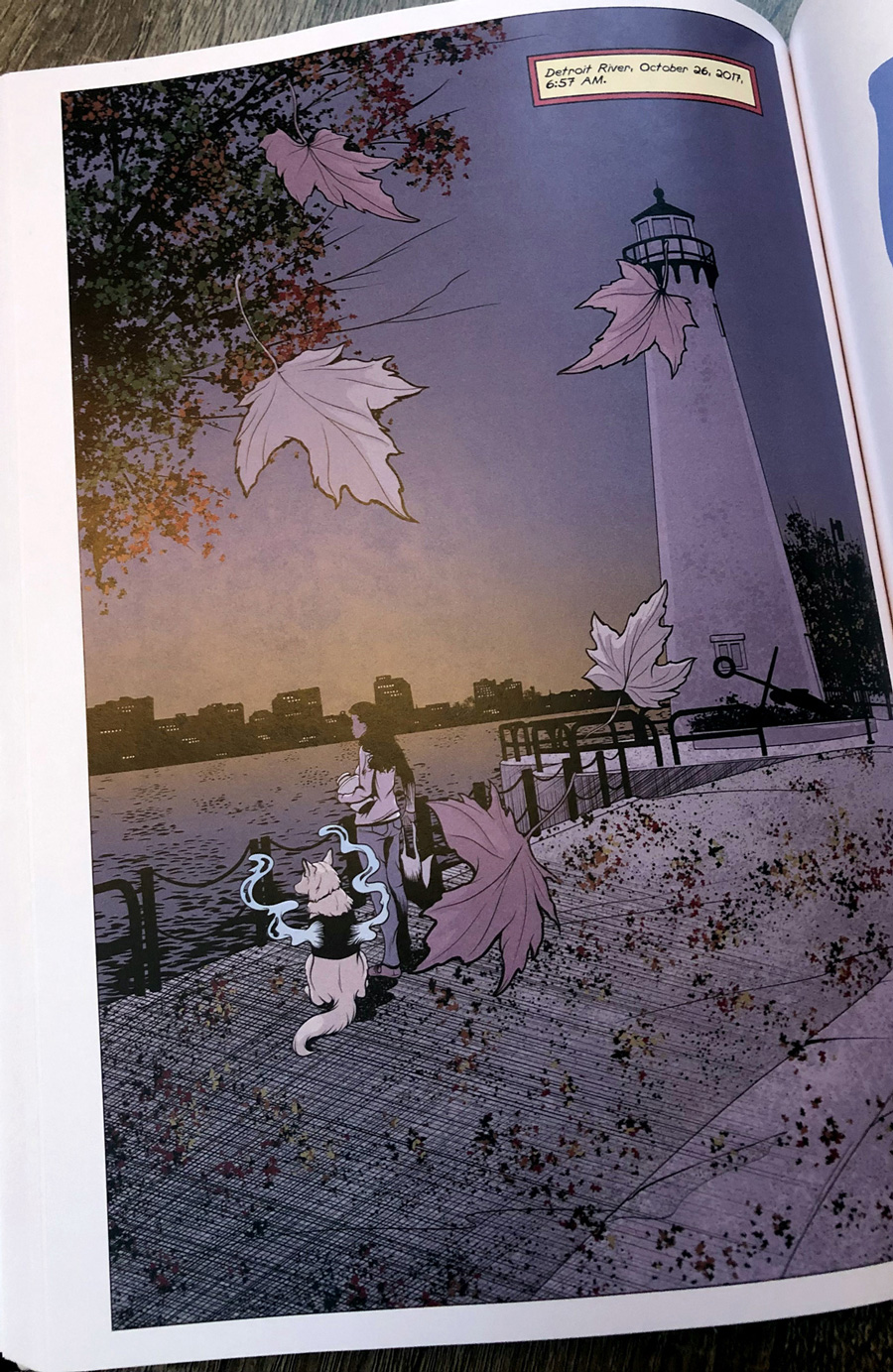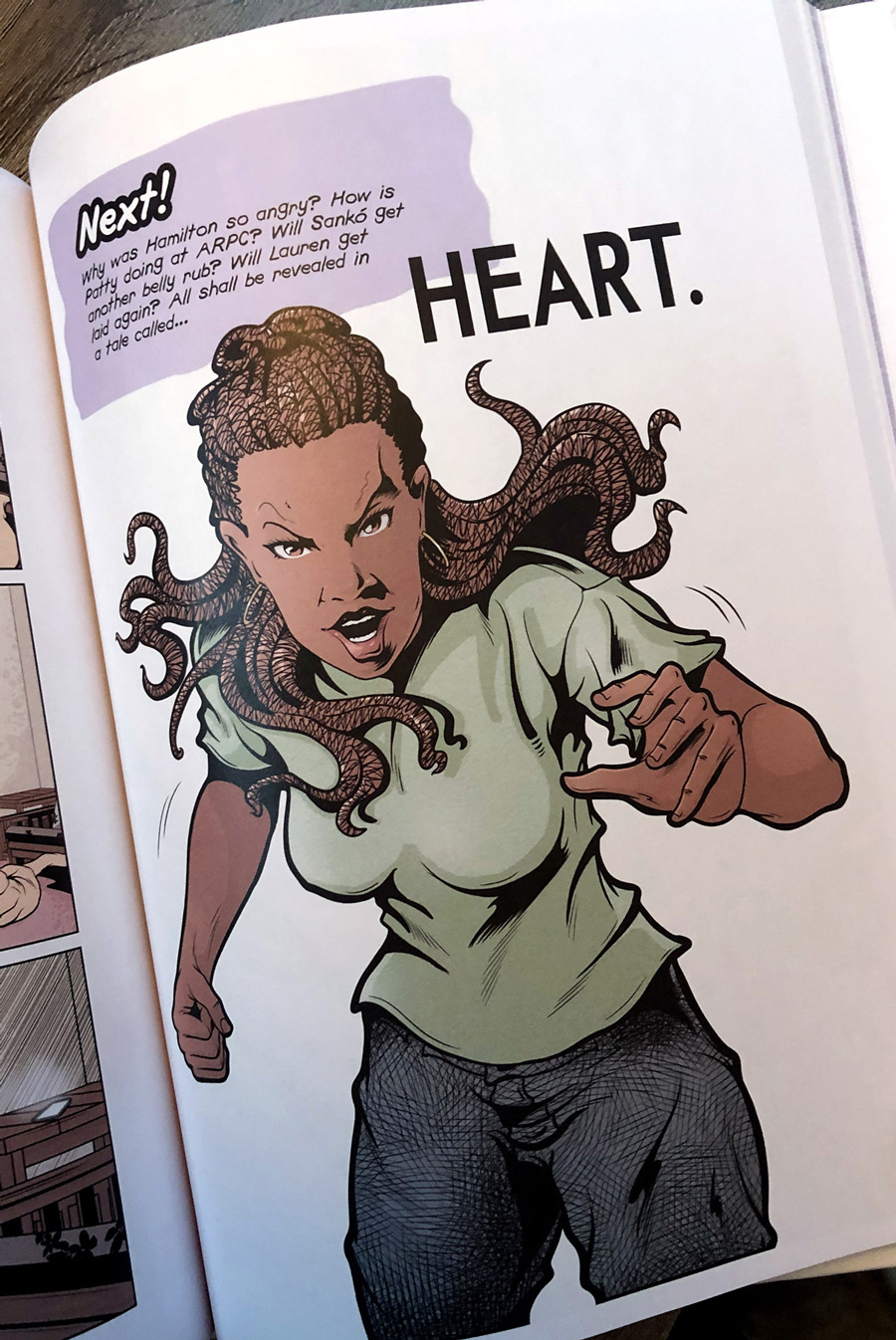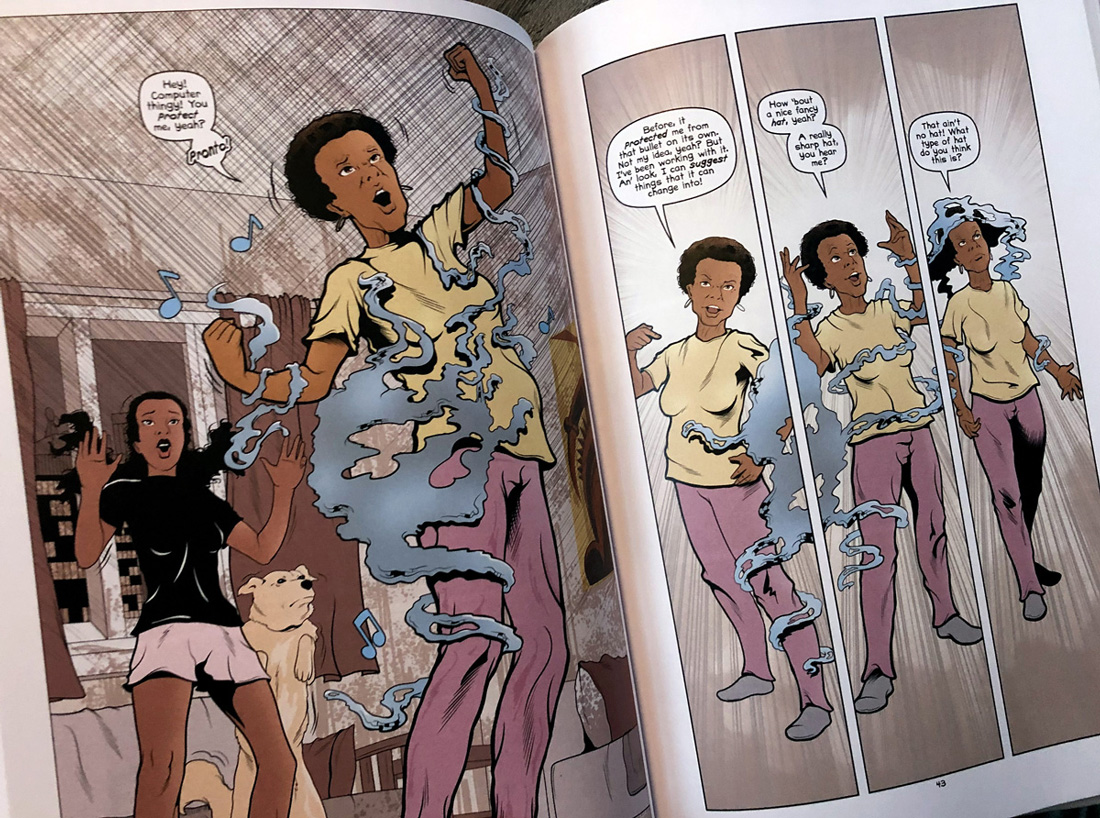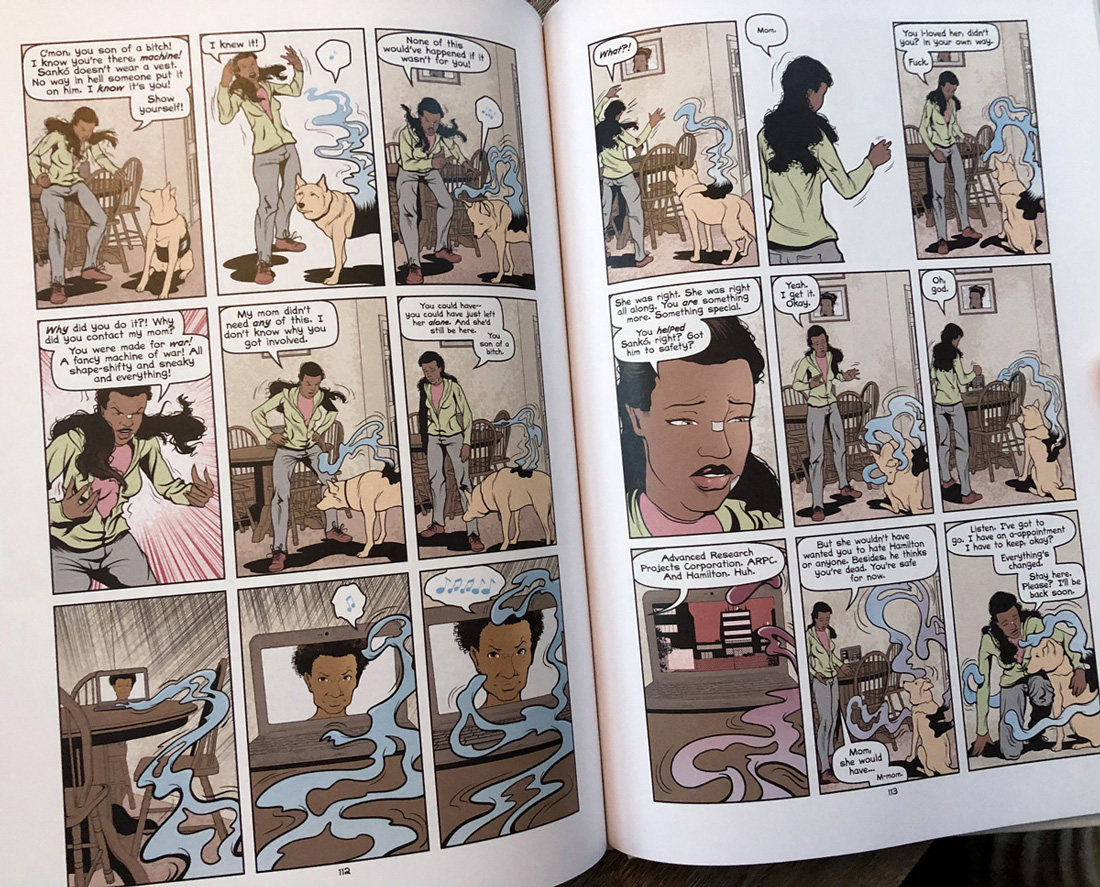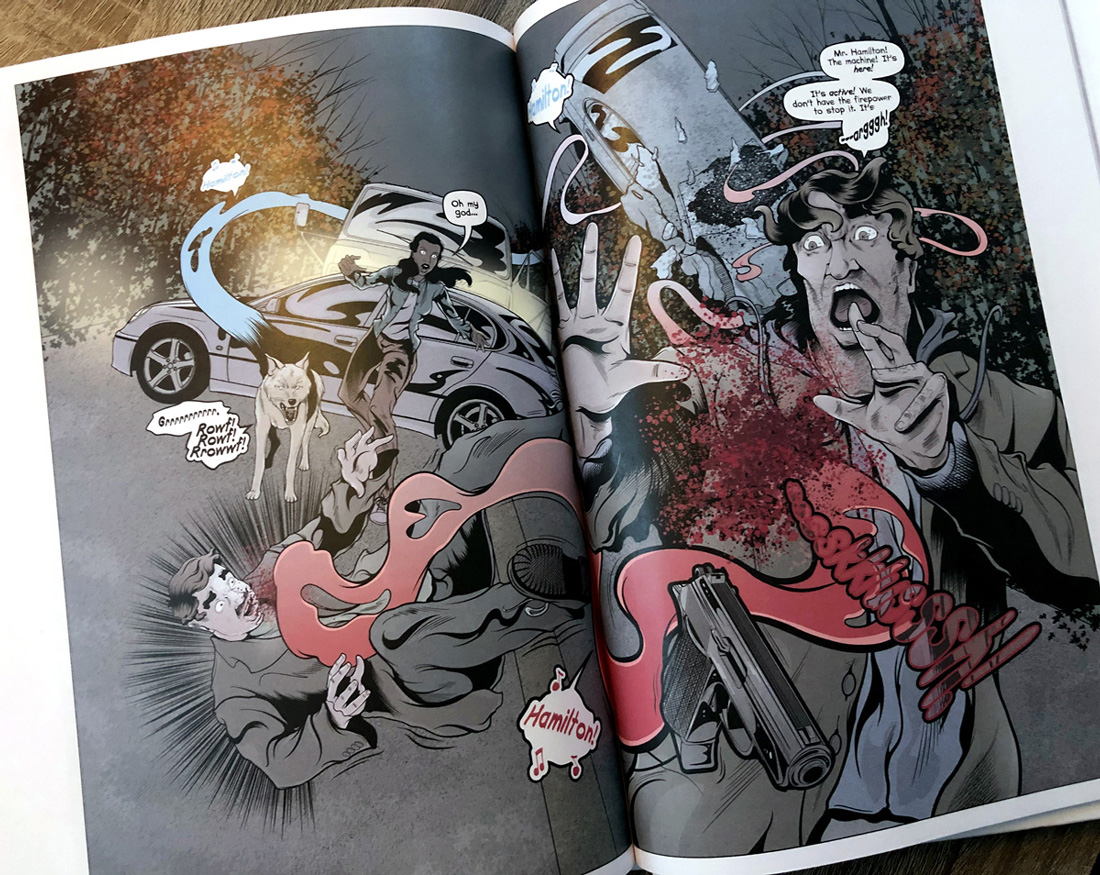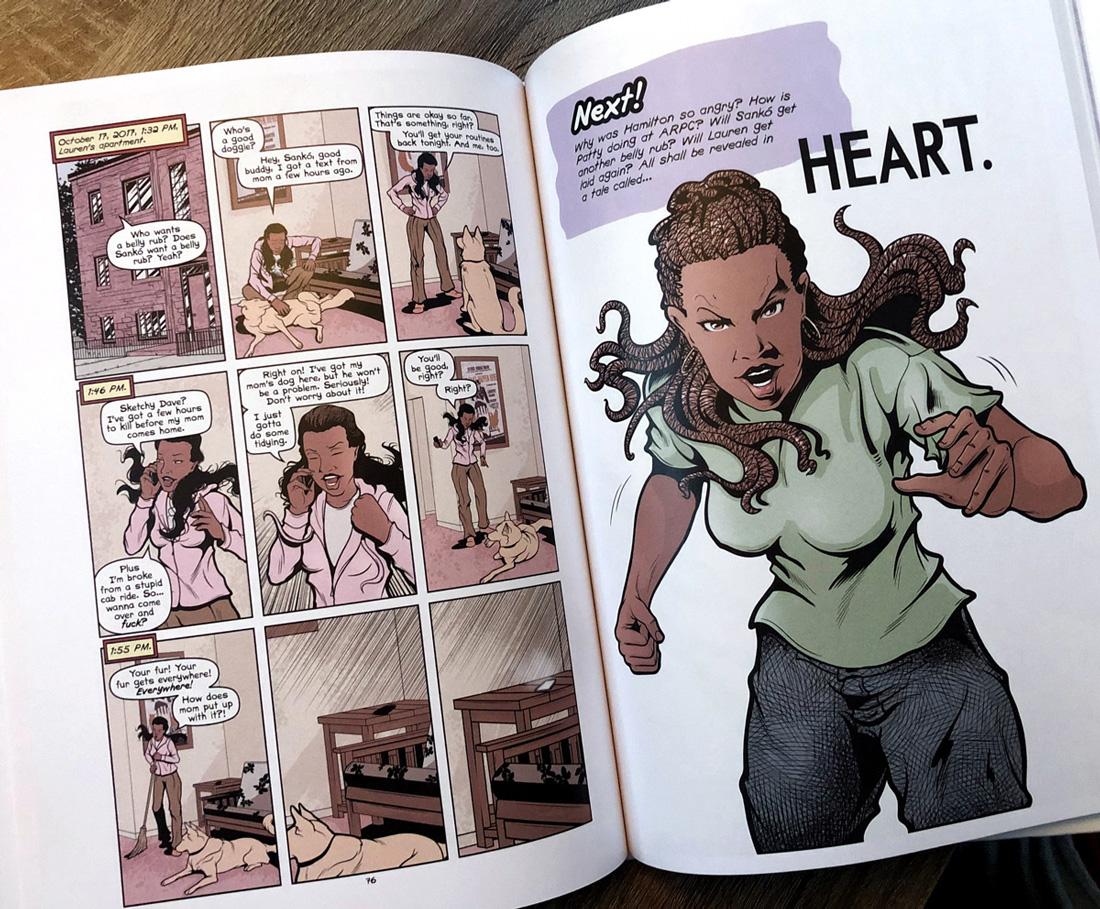I made a mistake.
Definitely. A mistake. And it wasn’t just a small mistake, either. It was a pretty big mistake and one that took some doing to correct. Mistakes are like that sometimes. While one can learn and grow from making them, it can still be a frustrating and discouraging process to fix them.
See? That’s easy enough to write, but it’s surprisingly hard to explain. Harder still is the fact that I’ve actually made a lot of mistakes. Not the kinds of mistakes that hurt anyone (well, except perhaps myself), but certainly the kinds of mistakes that can be hard to recover from.
In the case of ongoing comic book series WOLF’S HEAD, my main mistake was in misunderstanding a key point about colour and colour theory. Since I didn’t realize I had made a mistake, it ramified; the same mistake wound up being repeated throughout the first fourteen issues (!) of the periodical version of WOLF’S HEAD. Not a single issue or two, but throughout all of those issues.
Yeah. Can you imagine my frustration?
So what exactly was the nature of my mistake? Well, it’s tricky to explain, but I’ll give it my best shot. Throughout the first fourteen issues of WOLF’S HEAD, I had used a “cell-shaded” approach to colouring. The idea was to use simple shadows to add nuance to the colouring process. “Simple” being the operative word. I wanted WOLF’S HEAD to have fairly simple colouring. Why? Well, I love black and white inks. I really do, and I busted my ass to become a strong enough inker that my work would look nice and crisp in pure black and white. I prefer colours to support the inking and not “fight it.” I don’t want colours that fight — maybe a better word might be “obstruct” — my inks. To do that and do it effectively meant that I had to do quite a bit of research to fully understand colour as it applies to comics. And I had to build a palette that would work within that key restriction.
Now, to continue to explain this requires a quick side-step into printing technology. I’ll keep this as simple as I can, especially because chatting about printing technology tends to make an audience’s eyes glaze over. And I’m no exception to that! So, as quickly as I can, here goes: full-colour printing typically uses what are called CMYK inks, used in some colour printing. That’s Cyan (“C”), Magenta (“M”), Yellow (“Y”), and Black (“K”). Theoretically, each of those four colours can have a maximum concentration of 100%.

Take Cyan, for example. You can have a very “soft” colour made with only 10% Cyan. You can also have a very “strong” colour made with 100% Cyan. The same is true for all four of the colours that make up the CMYK colour model. All four of these colours (the “CMYK”) can be mixed together, up to a maximum of 100% each. That obviously means that the maximum amount of ink that could be used through this mixing process is, you guessed it, 400% (the maximum of 100% for each of the “CMYK” colours equals 400%).
Here’s the key caveat: while that is true within certain printing applications and even digitally (inside a graphics program like Adobe Photoshop), in reality it very much depends on what colours and in what percentages the actual physical printer is capable of printing. In my case, I was restricted to a total ink mix of 240%. Not 400%. 240%. I can use any colour percentages I want, just as long as the total colour combination does not exceed 240%.
As a result, this means I can’t have a colour mix of, for example, 75% C + 75% M + 100% Y. Why? Because the total ink required to use that colour mix adds up to 250%. And 250% is 10% over my maximum restriction of 240%.
Well, what happens if I use more than 240%? Simple. The printer will have to adjust any colour found to be over 240%, bringing that colour mix back to being within 240%. Colours out of the printable range are called “out of gamut” colours. The trick with these “out of gamut” colours is that I can’t control the transition back to within 240%. It’s often made automatically by software used by the printer. In the rare cases it’s not, then often the print-ready file (the file that the printer will actually use to print the book) will be rejected. Either way, “out of gamut” colours are to be avoided.
As a result, I had to build my colour palette with that 240% restriction in mind. And honestly, it’s not too much of a restriction. I’ve always preferred using so-called “restricted” colour palettes, mainly because I don’t need an endless amount of colour. I really don’t. I just need to have enough variety of colour to enhance my storytelling. At the end of the day, that’s my goal: stronger storytelling. Colouring is simply one of the “tools in the toolbox” that allows me to do just that. Building a palette from scratch allows me to keep my ink limit of 240% and avoid any and all “out of gamut” colours.
So, with all of that said, what was the problem? Well, the clue is in the colour mix. Remember that 240% limit? My black lineart (the actual black and white inked art) is built out of what are known as “Rich Blacks.” All that means is that rather than build the black lineart out of exclusively 100% K (so-called “Flat Black”), the black lineart is actually built out of a mix of colours. While there is no hard and fast rule (well, save for that 240% maximum), I happen to use the following colour combination: 60% “C”, 40% “M”, 40% “Y”, and 100% Black “K.”
That colour mix creates a very nice “Rich Black” that is really quite lovely.


Ready for my mistake? Recall that I said I used “cell-shading” to build up simple shades and shadows on both characters and backgrounds. Well, some of those shades came very close to that “Rich Black.” I might use a shadow of 90% “C,” 73% “M,” and 73% “Y.” That gives a final ink mix of 236%, only 4% off from my 240% total ink limit and thus my 240% “Rich Black.”
Uh-oh.
Why “uh-oh?” By bringing some shades and shadows that close to the value of my actual lineart, these shades and shadows risked obscuring my lineart. As a result, in scenes that used these very dark colours (also known as “low key” colours), they caused my lineart to almost disappear. That crisp lineart that I wanted wouldn’t look so crisp. In fact, it tended to almost “blend” with the colour.
Oh no!

Worse, I didn’t realize it right away. I never even thought about it. Eventually, I had begun to realize the problem around issue 11 of the periodical series, but I couldn’t quite frame the problem in my head. I was unsatisfied with how my colours looked, but I couldn’t explain why. I also wasn’t sure what to do about it. I was nervous about making a significant colour change while the series was ongoing, so I played for time — continuing to create and distribute new issues of WOLF’S HEAD — while I researched what had happened and tried to figure out exactly how to fix it.
The answer wasn’t easy to come by and I actually came across it by accident. In fact, it was two different experiences that led to the eventual solution.
The first was while I was doing some research on bande dessinée, that wonderful phrase for French-language comics. Specifically, I was reading Ann Miller’s READING BANDE DESSINÉE, where she makes the following point:
“By now, the crude drawing style of the early albums had given way to the elegance of the ligne claire, or ‘clear line’, the graphic style which eschews shading, gradation of colours, and hatching in favour of clear outlines, flat colours, and geometrical precision. It also implies narrative legibility. Hergé defines it as follows: ‘You try to eliminate everything that is graphically incidental, to stylize as much as possible […] in fact, the ligne claire isn’t just a matter of drawing, it also refers to the script and the narrative technique’ (Peeters 1990: 204). Bruno Lecigne has argued that the ideological efficacy of the ligne claire lies not in what is chosen for depiction, but in the idea that the world is legible (Lecigne 1983: 40).” (Miller, Ann, READING BANDE DESSINÉE (Bristol: Intellect Books, 2007) 18).
You would be forgiven if you’re thinking that it was the lack of shading that stood out to me. It wasn’t! Rather, it was the notion of ‘narrative legibility’ and the corresponding idea that the ‘world is legible’ that caught my imagination. Why did that excite me? Because it fit perfectly with what I’ve long been trying to do with my own writing! I strongly believe that readers shouldn’t have to “decode” or otherwise deconstruct the story in front of them. It’s not their job to decipher the “grammar” of comics. That’s my job and I need to do it in the clearest and most concise way possible. No reader left behind.
More could be written on this subject — quite a bit more — but, for now, I want to focus on how Miller’s words played through my mind. I wasn’t as swayed by the lack of hatching or the use of flat colour and whatnot, mainly because I have seen examples of ligne claire that doesn’t do this. As one small example, the cover of the English edition of Hergé’s DESTINATION MOON immediately comes to mine.
In fact, the notion that the philosophy of ligne claire doesn’t only apply to lineart was also a shock to me. What I realized is that ligne claire preserves the integrity of the lineart by ensuring that strong colour (i.e.: low key colour) is never so strong to challenge the lineart. To bring it back to the language of colour percentages, it simply meant that none of my “darkest” colours could ever have an ink mix that was too close to 240%! That 236% I mentioned a few paragraphs ago? That was right out, as was any other colour that came too close to 240%. Even 210% might be a problem.
I quickly came to realize that this posed a significant challenge. Why? Well, the main protagonist of WOLF’S HEAD is Lauren Greene, along with various supporting characters (like her mom Patty). Since both Lauren and Patty are black, the colour combination I typically used for their skin tones was fairly strong. Lauren, for example, is based on a default mix of 31% “C,” 60% “M,” and 60% “Y.” While that’s only a total of 151%, well-within my 240% ink limit, that was also unshaded. When I added shades or shadows to Lauren’s skin tones, that typically was a mix of 55% “C,” 85% “M,” and 85% “Y.” That’s a total of 225% and thus very close to my 240% maximum. In other words, those shades and shadows were far too close to my “Rich Blacks” lineart. Far too close.
When I reviewed the original print collections of WOLF’S HEAD, I could see the problem — now that I was finally aware of it!
What to do?
Thinking on the problem and trying to brainstorm solutions eventually led me to the second part of the solution. As with most artists, I look at the printed works of others, mainly to keep myself apprised of what’s going on — broadly — with the medium. I found a reference to an American comic book series that I had missed when it was first serialized. This was the comic titled CONVERGENCE, published by DC Comics in 2015. In particular, I was looking at one of the spin-off titles, specifically CONVERGENCE: SHAZAM, with art by Evan “Doc” Shaner and colours by Jordie Bellaire. It was Bellaire’s colours, over the wonderfully “open” lineart by Shaner, that really stopped me. Bellaire’s colours were beautiful; and better, from my point of view, they were missing much of the “special effects” that I find tends to so often overwhelm the lineart in corporate comics. Also absent, however, was the cell-shaded approach to shades and shadows that I had been using in my own work. In addition, Bellaire used a beautiful “texture” effect to add a bit more nuance to her colours.
In fact, this latter point (the “texture”) led me to another thought that I wasn’t expecting. So many reprint collections of comics — those from the Golden Age right up to the beginning of the so-called “Modern Age” — tended to print the new collections on better quality paper. Gone were the old newsprint days! For those who wanted their collections on higher quality and/or archival paper, these reprints were just what the doctor ordered.
However…
These reprints were often also recoloured, sometimes using the original colourists as a base-line and sometimes creating brand new colours, to facilitate reprinting these old titles for the new digital colouring age. Newsprint, despite its restrictions, gave older printed titles a “grain” or a “texture” that worked with the colour printing technology of the time. Taken together, the colours and the newsprint would often, I’d argue, create a synthesis that was stronger than the sum of its parts. With the modern recoloured reprints, often on glossy paper, that “grain” or “texture” was eliminated. The glossy paper simply doesn’t have it. The resulting reprint colours, even when they are close to the originals, lacked a certain something. It’s hard to put into words exactly what that absence is, but part of it was reprinted colour combined with glossy paper was too bright and often too garish.
It turns out that stripping out one part of the technology from that era (in this case, the newsprint paper) wound up hurting the colours. At least that’s my conclusion and argument.
When I saw Bellaire’s colours on CONVERGENCE: SHAZAM, I realized that she had resolved this “grain” or “texture” problem. Her colours, both on screen and in the printed comics, were nuanced and beautiful. And they didn’t suffer for being printed on relatively glossy paper, because the very texture she used “insulated” her colours from the excessive effect of the glossy paper.

I also realized that Bellaire had — probably intentionally — resolved my cell-shaded issues. How so? Bellaire basically didn’t worry about them as she coloured over Shaner’s lineart. It sounds a little silly, I think, but I realized that I didn’t have to worry about them, either. That realization was a lifeline, because it meant that I now had a new method of approaching my own colouring. I could stop worrying about cell-shading at all. I could emphasize texture as well as colour and work within the ligne claire philosophy of colour to ensure that my lineart remained as clear and clean as possible, even if I continued to use hatching and other inking effects then many “pure” ligne claire practitioners prefer not to use.
With these new “tools,” I set about to test them with my own artwork and style. It was a relatively slow process, partially because I was still working on new issues of WOLF’S HEAD throughout this period, but also because the only way to test it was to recolour actual artwork that I’ve done to see the result. Well, it was slightly trickier than that because I also had to see how a printer would actually handle this new colouring process. I went back to some older short stories that I had written and illustrated back in 2015 and 2016 and recoloured them with this new approach. Once they were complete, I was able to publish the stories in a new publication titled STORIES! 2015 TO 2019, a short 36-page collection that clearly showed that the new process worked. And worked very well.
The next step was to recolour some short stories that I was quite fond of, but that were coloured using my now “old” cell-shaded style. These stories starred two cantankerous wizards — a human and a dog — and their adventures were originally published in the print collection WIZARDS FOR HIRE — CHEAP! I was hesitant to do recolour them, but I know I needed to see what would happen. Test, test, and again test!

I was thrilled with the result! I don’t think any of these stories have ever looked better. Dropping the cell-shaded look was the key component of that, allowing my lineart to shine in a way that I had never experienced before. And there was nothing lost with this new colouring approach, either. I had worried that I was overlooking something; that the cell-shaded approach gave my art a certain “something” that I might not be aware of; losing it might damage my stories in ways that I might not be aware of. That proved to not be the case and was an immense relief. Further, adding the “texture” gave my colours a certain je ne sais quoi that they didn’t have before but still worked extremely well with my lineart, my inking.
In fact, these recolouring experiments has led to an upcoming collected edition containing all of these short stories in a new hardcover edition titled LOVE, LAUGHTER, AND LOSS: A COMICS COLLECTION.
With these experiments and tests successfully resolved, I set about the big challenge: recolouring all fourteen issues of WOLF’S HEAD to reflect this new colouring approach. It was a great deal of work, but as I did the work, I became happier and happier. Lineart that was previously “hidden” by my cell-shaded colours suddenly was clear and crisp, exactly as I had intended it. The “texture” didn’t obfuscate or conflict with either my lineart or my colours. And the simplified colours, inspired by ligne claire, were beautiful in their own right. In fact, most of my underlying colour remained exactly the same. The difference was primarily oriented around that pesky cell-shaded approach. Eliminating that made my colours sing. And, together with my lineart, the colours were stronger than they ever were before.
Was it easy? Nope, though probably not as hard as I expected. Did I learn as I went? You bet! Do I regret not hitting on this methodology earlier? Yeah. Yeah, I do, but as the old saying goes, “we learn by doing.” The only way I could truly know what the result would be was to test. While that testing process was slower than I might otherwise like, it was well-worth the time it took.
Here, of course, is probably the key question: am I happy with the result? Oh, absolutely I am. I really am.
One of the most amazing things about art — here I use the word broadly, meaning both writing and visual art — is that the learning never stops. It’s part of what makes art so exciting. And yup, it’s also what makes it pretty frustrating from time to time. It’s always a battle: learning, growing, failing, and learning and growing again. There are false starts, blind alleys, and mistakes; that’s part and parcel of the entire process. We learn by doing, by trying, by failing. The challenge is to never quit. To never stop learning and to never stop growing. To be part of the world and to be open to it. Sometimes we grow by learning, sometimes we grow by failing.
I’ve made a lot of mistakes; the point is to not let mistakes define me. That’s sometimes a challenge — sometimes a big challenge — but it’s also part of the fun.
And never forget: making art, regardless of one’s skill level and experience, is a great deal of fun.


